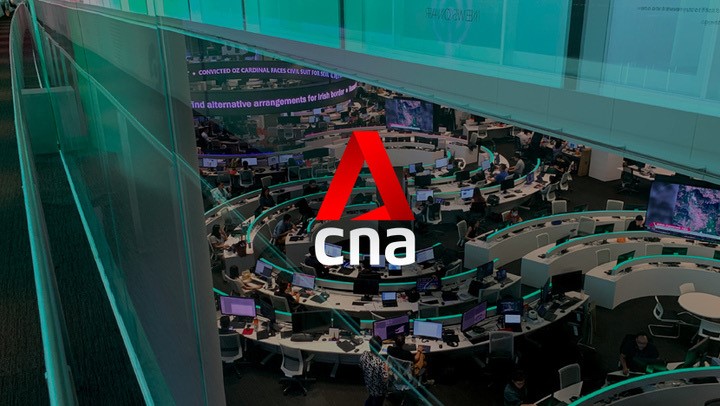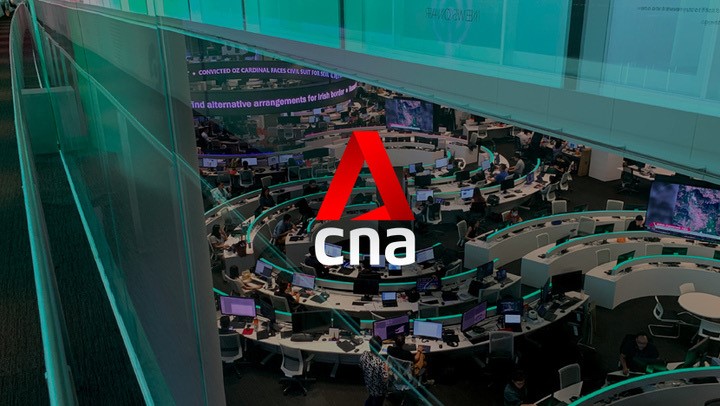Summary:
Two SMRT employees and 26 commuters were injured in the collision.PHOTO: MELVIN LAU
PUBLISHED
2 HOURS AGO
Adrian Lim
Transport Correspondent
SINGAPORE - An unprecedented software glitch in the signalling system of the East-West Line resulted in a collision between two MRT trains at Joo Koon station on Wednesday morning (Nov 15).
This resulted in a stalled train at Joo Koon being mistakenly profiled as a three-car train instead of a six-car one in the system, operator SMRT and the Land Transport Authority (LTA) revealed.
As a result, a second train which stopped 10.7m behind the first one "misjudged the distance" between the two, resulting in a collision, and injuring 28 people.
Transport Minister Khaw Boon Wan said: "It's an awful day today. Commuters were inconvenienced, and some even injured. We are deeply sorry for that."
Sharing their preliminary findings at a press conference on Wednesday evening, SMRT and LTA said the first train departed Ulu Pandan depot with a software protection feature, but this was "inadvertently removed" when it passed a faulty signalling circuit.
When it arrived at Joo Koon at 8.18am, all passengers were detrained due to an anomaly in the train signalling system, except for one SMRT staff member on board.
At 8.19am, the second train, carrying more than 500 passengers, arrived but stopped at the correct safe stopping distance, said LTA and SMRT. However, a minute later, the second train moved towards the first train and hit it.
Among the 28 people hurt were 26 commuters, and one SMRT employee each on board the first and second trains.

Transport Minister Khaw Boon Wan said that the investigation should be allowed to take its course. ST PHOTO: BENJAMIN SEETOR
Thales, the company which is supplying the new signalling system for the North-South and East-West lines, said it had not encountered a glitch similar to Wednesday's incident previously.
Said Mr Khaw after the press conference: "Thales is confident of their system, but I advised the team, let's play doubly safe, where safety is involved, that's why I want them to suspend the Tuas West Extension tomorrow, so we have a whole day to do a thorough check before we resume the Tuas West Extension."
Asked if a committee of inquiry will be convened to look into this, Mr Khaw said the investigation should be allowed to take its course.
Asked whether commuters' confidence in the MRT system had been undermined following Wednesday's accident and October's MRT tunnel flooding, Mr Khaw said: "Obviously people will be upset... I'm equally upset."
- unprecedented ( means even god did not expect it)
- software glitch
- stalled train profiled as 6-train instead of 3-train
- second train misjudged distance ( no humans involved in the misjudgement)
- never happened before
- so nothing to do with management
- no further staff will be thrown under the bus
- there is no maintenance problem
- British signalling giant Thales to be blamed
- Khaw is also upset
Two SMRT employees and 26 commuters were injured in the collision.PHOTO: MELVIN LAU
PUBLISHED
2 HOURS AGO
Adrian Lim
Transport Correspondent
SINGAPORE - An unprecedented software glitch in the signalling system of the East-West Line resulted in a collision between two MRT trains at Joo Koon station on Wednesday morning (Nov 15).
This resulted in a stalled train at Joo Koon being mistakenly profiled as a three-car train instead of a six-car one in the system, operator SMRT and the Land Transport Authority (LTA) revealed.
As a result, a second train which stopped 10.7m behind the first one "misjudged the distance" between the two, resulting in a collision, and injuring 28 people.
Transport Minister Khaw Boon Wan said: "It's an awful day today. Commuters were inconvenienced, and some even injured. We are deeply sorry for that."
Sharing their preliminary findings at a press conference on Wednesday evening, SMRT and LTA said the first train departed Ulu Pandan depot with a software protection feature, but this was "inadvertently removed" when it passed a faulty signalling circuit.
When it arrived at Joo Koon at 8.18am, all passengers were detrained due to an anomaly in the train signalling system, except for one SMRT staff member on board.
At 8.19am, the second train, carrying more than 500 passengers, arrived but stopped at the correct safe stopping distance, said LTA and SMRT. However, a minute later, the second train moved towards the first train and hit it.
Among the 28 people hurt were 26 commuters, and one SMRT employee each on board the first and second trains.

Transport Minister Khaw Boon Wan said that the investigation should be allowed to take its course. ST PHOTO: BENJAMIN SEETOR
Thales, the company which is supplying the new signalling system for the North-South and East-West lines, said it had not encountered a glitch similar to Wednesday's incident previously.
Said Mr Khaw after the press conference: "Thales is confident of their system, but I advised the team, let's play doubly safe, where safety is involved, that's why I want them to suspend the Tuas West Extension tomorrow, so we have a whole day to do a thorough check before we resume the Tuas West Extension."
Asked if a committee of inquiry will be convened to look into this, Mr Khaw said the investigation should be allowed to take its course.
Asked whether commuters' confidence in the MRT system had been undermined following Wednesday's accident and October's MRT tunnel flooding, Mr Khaw said: "Obviously people will be upset... I'm equally upset."



